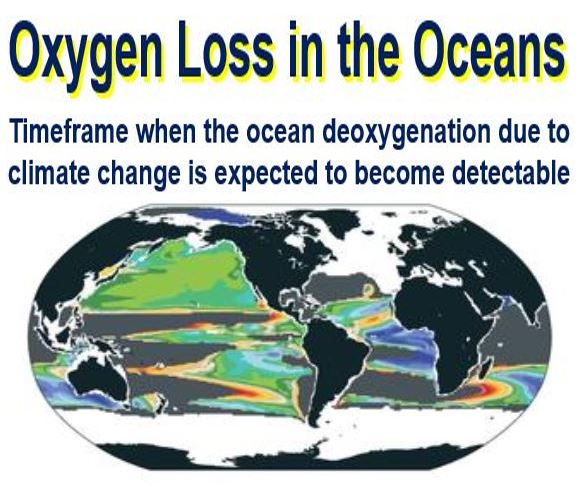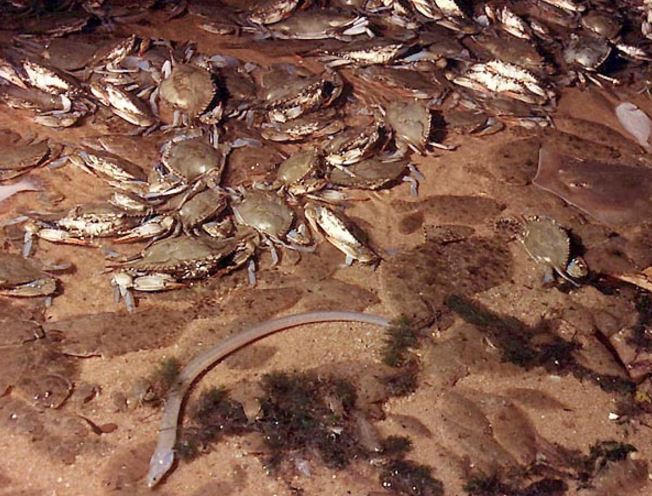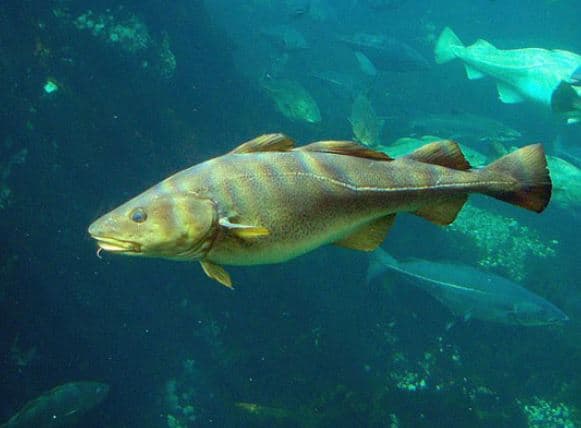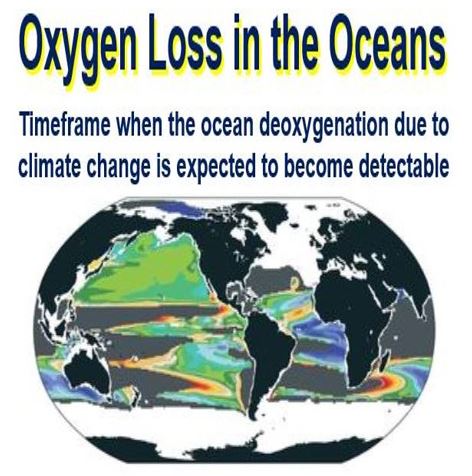Oxygen levels in our oceans have been falling in many regions of our oceans due to climate change – this drop in the amount of oxygen dissolved in the sea will probably become evident across much of our oceans by the year 2030, say scientists from the National Center for Atmospheric Research (NCAR) in Boulder, Colorado, USA.
Researchers expected global warming to sap our seas of oxygen, leaving marine life including crabs, squid, sea stars and fish struggling to breathe.
However, the scientists had found it difficult to determine whether this anticipated decline in oxygen levels was already having a detectable effect.
 By the end third decade of this century, declining oxygen levels will likely be evident in many of the world’s oceans. (Image: nsf.gov)
By the end third decade of this century, declining oxygen levels will likely be evident in many of the world’s oceans. (Image: nsf.gov)
NCAR scientist Matthew Long and colleagues wrote about their latest study and findings in the journal Global Biogeochemical Cycles (citation below) which belongs to the American Geophysical Union.
Loss of oxygen a major threat to marine life
“Loss of oxygen in the oceans is one of the serious side effects of a warming atmosphere, and a major threat to marine life. Since oxygen concentrations in the ocean naturally vary depending on variations in winds and temperature at the surface, it’s been challenging to attribute any deoxygenation to climate change.”
“This new study tells us when we can expect the effect from climate change to overwhelm the natural variability.”
 Lower oxygen levels in the sea threaten marine life. As oxygen concentrations decline, the number of ‘dead zones’ will increase. (Image: nsf.org)
Lower oxygen levels in the sea threaten marine life. As oxygen concentrations decline, the number of ‘dead zones’ will increase. (Image: nsf.org)
The study was funded by the National Science Foundation (NSF), a US government agency that finances fundamental research and education in all the non-medical fields of science and engineering.
The whole ocean – from deep down to close to the shallows – receives its oxygen supply from the surface, either from phytoplankton, which through photosynthesis releases oxygen into the water, or from the atmosphere.
Warm water absorbs less oxygen
When the surface of seawater is warmer, it absorbs less oxygen. Absorbed oxygen has a more difficult time getting deeper into the ocean when the water is warm, because as it heats up it expands, becoming lighter than the water below it, making it less likely to sink.
Thanks to natural warming and cooling, oxygen levels on the surface of the sea change constantly – and deeper down in the ocean, those changes can linger for a long time, years or even decades.
For example, if there is an abnormally cold winter in the North Pacific, the ocean surface soaks up a large amount of oxygen. Thanks to the natural circulation pattern, that oxygen will then be carried deep down into the ocean, where it might still be detectable several years later as it journey’s along its flow path.
 In ocean waters where oxygen levels are low, fish kills are common. (Image: nsf.org)
In ocean waters where oxygen levels are low, fish kills are common. (Image: nsf.org)
Contrastingly, an unusually hot year may lead to ‘dead zones’ in the sea, where marine life including fish cannot survive.
Scientists used Earth System Models
To cut through this natural variability and determine what the impact of climate change might be, Dr. Long, together with Taka Ito of Georgia Tech and Curtis Deutsch from the University of Washington, relied on the NCAR-based Community Earth System Model.
Eric Itsweire, program director in the National Science Foundation’s Division of Ocean Sciences, said:
“This study shows how far comprehensive Earth System Models have come in the effort to quantify, along with relatively sparse observations, large-scale changes in oxygen in the oceans due to both natural variability and climate change.”
The researchers gathered and analysed data from a project that ran the model more than two dozen times for the 1920-to-2100 period. Each run began with tiny variations in air temperature.
 Global cod stocks, which are already low, will decline even further with the progressive deoxygenation of our oceans. (Image: nsf.gov)
Global cod stocks, which are already low, will decline even further with the progressive deoxygenation of our oceans. (Image: nsf.gov)
As the model runs progressed, those minuscule differences got bigger, producing a set of climate simulations useful for studying questions about variability and change.
They used the simulations to study dissolved oxygen, which served as guidance on how much concentrations may have varied naturally in the past.
With this data, they were able to determine when ocean deoxygenation caused by climate change is likely to become more severe than at any point in the modeled historic range.
The authors found that they were already able to detect lower oxygen levels due to climate change in parts of the eastern Pacific and Atlantic basins, as well as in the southern Indian Ocean.
They also determined that between 2030 and 2040, more widespread detection of deoxygenation caused by climate change would be possible.
In some parts of the ocean, however, including off the coasts of Australia, Southeast Asia and Africa, deoxygenation due to climate change would not become evident even by the end of this century.
Detecting a global pattern
Dr. Long and colleagues also created a visual way to distinguish between climate-change induced and naturally-occurring deoxygenation.
They used the same model dataset to create maps of oxygen levels in our oceans, showing where the waters were oxygen-rich and oxygen-poor.
The scientists said they can distinguish between oxygenation patterns caused by climate change and natural weather phenomena.
The patterns linked to climate change also became evident in the model runs around 2030, confirming the conclusion that widespread deoxygenation caused by climate change will become detectable around 2030.
The maps that they created could also be useful for researchers when deciding where to place instruments to monitor ocean oxygen levels in the future to get a better picture of the effects of climate change. Ocean oxygen measurements are currently relatively sparse.
Dr. Long said:
“We need comprehensive and sustained observations of what’s going on in the oceans to compare with what we’re learning from our models, and to understand the full effect of a changing climate.”
Citation: “Finding forced trends in oceanic oxygen,” Matthew C. Long, Curtis Deutsch and Taka Ito. Global Biochemical Cycles. First published 29 Feb 2016. DOI: 10.1002/2015GB005310.
Video – Ocean Deoxygenation
In this video, PhD student Natalya Gallo presents the causes and consequences of deoxygenation in a warming ocean.

